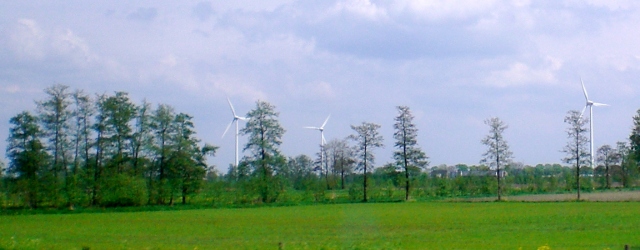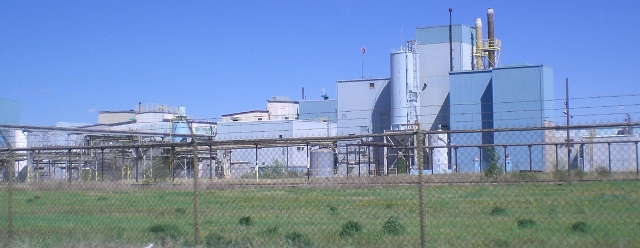What people really want is reliable power. We don’t want to end up freezing in the dark. Electricity is important enough to our society that our energy security is of great importance to us. This is a fundamental issue that all technically advanced nations have to face.
It would be a mistake to equate baseload with reliable. Baseload power sources still have to turn off sometimes. In some cases, the downtimes for the big thermal plants such as nuclear and coal can be several percent of their lifetimes. If our power grid were based off of only baseload sources of this type we might see rolling blackouts now and then unless we built extra power plants to cover the downtime.
Tag: Energy
Electricity Grid: Key Terms and Definitions
In the most general sense, we are talking about moving power from one place to another. The electric grid accomplishes this by having power lines between generation stations and demand locations such as homes and businesses. Some general rules apply to this sort of technology. The more power you have to move, the more expensive it will be to build the infrastructure to do it. The further you have to move the power, the more energy losses you are going to have in doing so. These rules apply in general, but the specifics of a problem will dictate what sort of solution is applied.
Incentives to build renewable in Saskatchewan
We proposed a feed-in tariff for renewable energy resources such as wind, solar, and hydro power. What this means is basically that people or companies who produced power from these sources would be paid more for their electricity than non-renewable providers. See our proposal for more details about the practicality and effectiveness of a feed-in tariff as well as more detail on tailoring the solution for Saskatchewan. The intent of this policy mechanism is to stimulate an increase in private investment into these technologies.
Would nuclear be too expensive for Saskatchewan?
This piece refers to kilowatt-hours (kWh) and costs-per-kWh as well as cost per installed watt ($/kW). If you are new to these units, please consult our introduction to energy system terms. In this area of knowledge, we defer to our publicly-owned utility for the best possible answer. Sask Power’s analysis in 2009, submitted to the […]
Does nuclear waste last millions of years?
Prior to reading this article, it is recommended that you read our basic definitions for discussing nuclear science. In this article we refer to ‘used nuclear fuel’ and to ‘nuclear waste’. For our current discussion these are both the same thing. To get a deeper understanding of nuclear power in general, see our general nuclear […]
Nuclear Plants Need Backup Generators
A power utility has to have the capability of calling into service enough power to make up for the loss of its largest generator on short notice. For a nuclear generator, this would be between 300 and 2000 MW. In our home province of Saskatchewan, the largest single generator SaskPower has to keep backup capacity for currently is a 300MW coal unit. However, if the entire Boundary Dam facility went down, the Saskatchewan system could be missing as much as 813 MW of power.

What does ‘renewable’ mean after all?
If you think of renewable sources of energy you probably think of things like wind turbines, solar panels, biomass plants, and hydroelectric plants. However, these are just examples. What does it mean to be renewable?
Chevron Oil Spill off the BC Coast
Oil Spill Near Vancouver Apparently Chevron waited a month before informing the public about an oil, gas, and diesel leak into the Burrard Inlet in Burnaby, BC. However, it appears that they are actually following the regulations for such a leak. Locals are questioning both the direct effect on their habitat, and the ramifications of […]
Chevron’s Orphan Basin Project Under Scrutiny
Chevron says that it would not be able to clean up if its proposed deep sea rig off the coast of Newfoundland had a similar disaster to that currently happening in the Gulf of Mexico. They estimate extremely small possibilities of any major spills, but there are valid concerns about the sheer scale of what […]

Nuclear Power: The Whole Story
Electrical power production using a nuclear power source is accomplished through the heat produced by bringing greater than a specific amount of radioactive material together. Water is heated to create steam, which in turn spins turbines to generate electricity. Greater quantities or concentrations of nuclear material produce more heat. The higher the temperature of the heat source, the more efficient the production of electricity from it becomes. If the core becomes too hot, it is possible for core material to melt. If the reactor core is kept relatively cool, the energy production is not thermodynamically or economically efficient. Combinations of different fuels, fuel cladding, and coolants have been tested to optimize reactor cores for efficient power production while remaining very safe. Many different combinations are in use today, each with it’s advantages and disadvantages.

Energy: Key Terms and Definitions
Energy is a concept that represents the amount of physical work that can be done by a certain system. For instance, a tank of gasoline has a certain amount of energy that can be released by burning it to achieve useful results, like moving a car a long distance. The concept of energy is very useful when talking about subjects as broadly different as climate change, electrical power plants, car collisions, explosives, and food diets. Energy exists in two forms, kinetic and potential.
Radiation: Key Terms and Definitions
The activity of a piece of radioactive material (called a ‘source’) is a measure of how many radioactive decays taking place per second. If you compare two uranium sources for instance, the one with the higher activity would be emitting more energy. There are three kinds of radioactive decays: alpha, beta and gamma.

Energy Storage
Energy storage is the saving some form of energy for later use. Energy is critical to every accomplishment of humans. This energy can take many forms. Some examples include potential, kinetic, chemical, and nuclear energy.
Energy storage is critical to the stable function of a power grid. Inevitably, power stations have to be serviced or have failures. Even failures that are a fraction of a second can be disastrous for certain applications, such as monitoring systems for heavy machinery, computers, and other sensitive electronics. Stability of power is a key factor in the design of an effective power grid. Stability requires that there be backup systems in place in case of a baseline power failure. Energy storage is required for most backup systems to be effective.